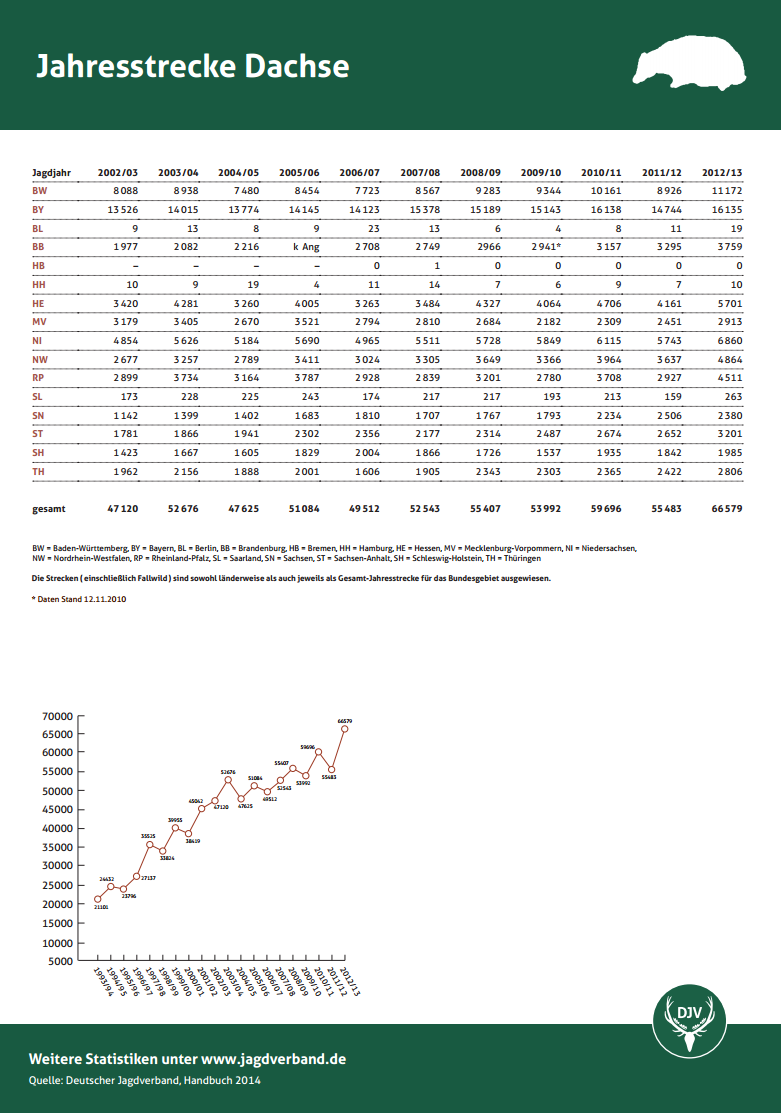Badger licensing statistics
Natural England typically received just less than 1,000 applications each year between 2001 and 2010 for licences to address issues relating to badgers3. About 75% of these applications were successful. The vast majority of these licences were to allow the sett to be interfered with. In fact the maximum number of badgers killed in one year was 5 and these were all killed because they were diseased. In a typical year, applications for development purposes exceeded applications for agricultural operations and also forestry operations by a factor of about three. In 2009 and 2010, the number of licences granted for the purpose of preventing serious damage were more than double those granted for development.The following extracts were taken from Reference 1 published in 1997 unless stated otherwise. Reference 1 presents the results of an enquiry into badgers, originally presented as a report to the Standing Committee of the Convention on the Conservation of European Wildlife and Natural Habitats, on the population and management status and conservation needs of the species in the Western Palaearctic.
Britain is the only country to have legislation that deals specifically with badgers.
...
ADAS (the government's Agricultural Development and Advisory Service) receive usually c. 1,000 complaints each year about badgers and their activities. [Editor note: ADAS was privatised in 1997.]
...
Badgers are remarkably popular in Britain. There are a great many local badger protection societies, and these raise considerable amounts of money for badger conservation and protection projects. [Editor note: However in a report2 by the Nature Conservancy Council on the national badger survery carried out between 1985 and 1988, it was reported that the incidence of hole blocking was widespread, with 15.7% of active main setts affected.]
...
Badgers are least common in central and western Scotland but very abundant in some areas, particularly in the south-west of England, with a density of >20 badgers/km2 having been reported from the Cotswold Escarpment.
...
Cresswell et al2 in 1990 reported that the overall mean national density is 1.08 animals/km2 in Great Britain.
...
The continuation of baiting is one of the main reasons for the badger's protected status in the UK. [Editor note: The badger is also protected in the Irish Republic and fines are issued for infringement. However these fines are significantly less than those in Northern Ireland2. Also, unlike in the UK, the Irish Republic cull badgers to address TB.]
...
Overall badger densities seem moderate (between 0.1 and 0.99 badgers/km2) throughout most of central and eastern Europe: France, Switzerland, Austria, Germany, Denmark, Norway, Lithuania, the Czech Republic, Slovenia, the Slovak Republic, Hungary, Luxembourg, Romania and Bulgaria. All these states (except Hungary and Luxembourg) permit hunting during an open season, but Hungary and Luxembourg are said to be reconsidering protected status for the badger.
The graph below shows the number of badger licenses processed each year by Natural England and DEFRA3.
Germany currently shoots about 66,000 badgers each year for sport. Click on the thumbnail shown below to see details.

References
- The conservation and management of the European badger (Meles meles). Nature and environment, No. 90. Council of Europe. Authored by H.I Griffiths and D.H Thomas. 1997.
- The History, Distribution, Status and Habitat Requirements of the Badger in Britain. Peterborough; Nature Conservancy Council. Authored by P Cresswell, S Harris and DJ Jefferies. 1990.
- Protection of Badgers Act 1992 - Licensing statistics